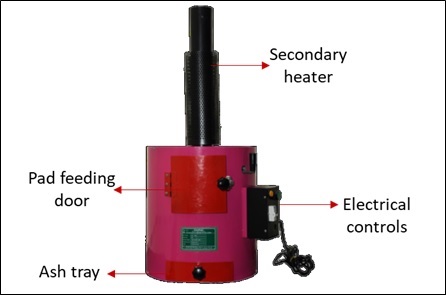Menstruation is a normal physiological phenomenon that women and adolescent girls experience every month. Hygienic management of menstruation is associated with the dignity and wellbeing of women and is the primary pillar of sanitation, hygiene and reproductive health. It may sound shocking but, unfortunately, it is considered as taboo in many societies even in the 21st century.
Restricting women from visiting religious places and barring other activities like cooking and eating certain foods are usually slapped on them during menstruation, more as perpetuation of outdated social practices but without any scientific validation. Due to social pressure, many girls opt to skip schools until the completion of periods because of lack of menstrual hygiene resources. In fact, there are several schools where separate toilets for girls are non-existent or are in a state of negligence. Such social stigma is a major stumbling block in achieving the lofty objective of gender equality and also affects the overall development of society.
With rapid urbanization, product availability and distribution, access to various options, increased mobility, awareness about menstrual hygiene, and consistent efforts from governments, the use of disposable sanitary napkins is growing rapidly. According to a recent study, 44,254 cm3 per female/year is the annual generation load of disposable sanitary napkins, which is often higher than any other hygiene product. It is estimated that 121 million women and adolescent girls use on average eight sanitary napkins every month in India; annually, this number shoots to 113,000 tons of menstrual waste generated. The generation of such high quantity sanitary pad waste creates stress on the waste management sector and poses a challenge for its safe disposal. Sanitary waste management with conventional tool and techniques may pose an immense threat to the land, water bodies, and human health.
Therefore, it is extremely necessary to promote the usage of sanitary napkins and avoid the risk resulting from the unscientific dumping of used sanitary waste in landfills and elsewhere. Better access to socially and culturally acceptable sanitary waste management facilities improves environmental sustainability and enables women and girls to fully engage in education and the workforce. The usual soiled sanitary pad disposal practice includes mixing with common garbage bins. The waste collector needs to segregate the menstrual waste from the rest solid waste, which is difficult, time-consuming and challenging. Therefore, at community levels, disposal techniques that are on-site, quick, safe and hygienic need to be prioritised.
Controlled decentralized incineration of soiled sanitary pads is the proven technique and it has marked its presence in many commercially available decentralized incinerators. Controlled incineration helps destroy the pathogens and pad material, and aids in overall sanitary waste management without which sanitary pads either get mixed with municipal solid waste or landfilled. The incinerators are the most favoured options at community levels; however, they are usually recognized for their poor performance, energy-intensive operation, toxic fumes generation from burning of plastics (e.g., furans and dioxins), costly and heavy in maintenance.
Based on the market research, there are limited incinerators that comply with the environmental guidelines. The available sanitary pad incinerators mostly perform subpar when it comes to achieving desired combustion chamber temperature and emission norms. Keeping in mind the voluminous sanitary waste generation, disposal and need of better designs of conventional incinerators, CSIR-NEERI, Sowball Aerothermics, Secunderabad, and International Advanced Research Centre for Powder Metallurgy and New Materials, Hyderabad came up with GreenDispo, an improved eco-friendly and energy-efficient electric sanitary pad incinerator.
GreenDispo: An Eco-friendly and Efficient Incinerator
An improved sanitary pad incinerator, "GreenDispo" is designed and developed with innovation in combustion chamber, ensuring instant and hygienic disposal of menstrual wastes in an automatic way, with auto power and thermal cut-off and is suitably insulated for energy conservation and user safety. Unlike many other incinerators operating at around 300-400°C resulting in harmful air emissions, GreenDispo has a primary and a secondary combustion chamber (optionally), which operates at 800 ± 50 °C and 950 ± 50 °C, respectively, with 2 seconds of gases residence time to help reduce carcinogenic air emissions, produced during the burning of plastics/chlorinated products. The unit can efficiently burn pads with high moisture content and super absorbent polymers (SAP). The exhaust concentration of Total Particulate Matter (TPM), CO, SO2, and NOx was observed to be 48.37 ± 8.7 mg/m3, 62.46 ± 8.10 mg/m3, 38.18 ± 1.08 mg/m3, 1.08 ± 0.44 mg/m3, respectively, with less than 5% ash per napkin, meeting standards under Waste Management Rules, 2016 (CPCB).
The exclusiveness of GreenDispo in terms of desired combustion temperature and emissions in line with the recommended value has generated excellent market, especially from responsible buyers, governments and other agencies. Development of such an incinerator is an excellent example of what can come out from judicious collaborations not only between two government R&D institutions, but also among the industry. This will promote the indigenous capabilities and potential available, thereby creating employment generation opportunities.

GreenDispo - Midi
GreenDispo comes in Mini, Midi and Maxi sizes based on capacity of pads and combustion chamber volume.
Salient Features
Ensures used sanitary pads disposal in a scientific and hygienic way
Energy-efficient heaters and innovative design of combustion chamber
Incinerates used sanitary pads at a temperature more than 800 °C
Optimized A/F ratio and heating cycles
Efficiently burns unbleached pads with high cellulose and super absorbent polymers (SAP)
Exhaust emissions comply with Bio-medical Waste (BMW) Management Rules, 2016
Eliminates Dioxin and Furan during combustion
Ash collected in separate tray with < 5% ash generated per napkin
Auto power and thermal cut-off and automatic temperature control
Suitably insulated with safe device surface temperatures
Easy to operate and with low maintenance
Beneficiaries
Schools and institutions
Community toilets
Girls’ hostels
Industries and Offices
Metro/Railway Stations
Convention Centres
Public Health Centres (PHCs)
Dissemination
Over 1,000 units covering different states/cities.
Users and supporters include the Madhya Pradesh government, Ministry of Human Resource Development (MHRD), All India Council for Technical Education (AICTE) institutions, UNDP, WaterAID and several other reputed agencies.